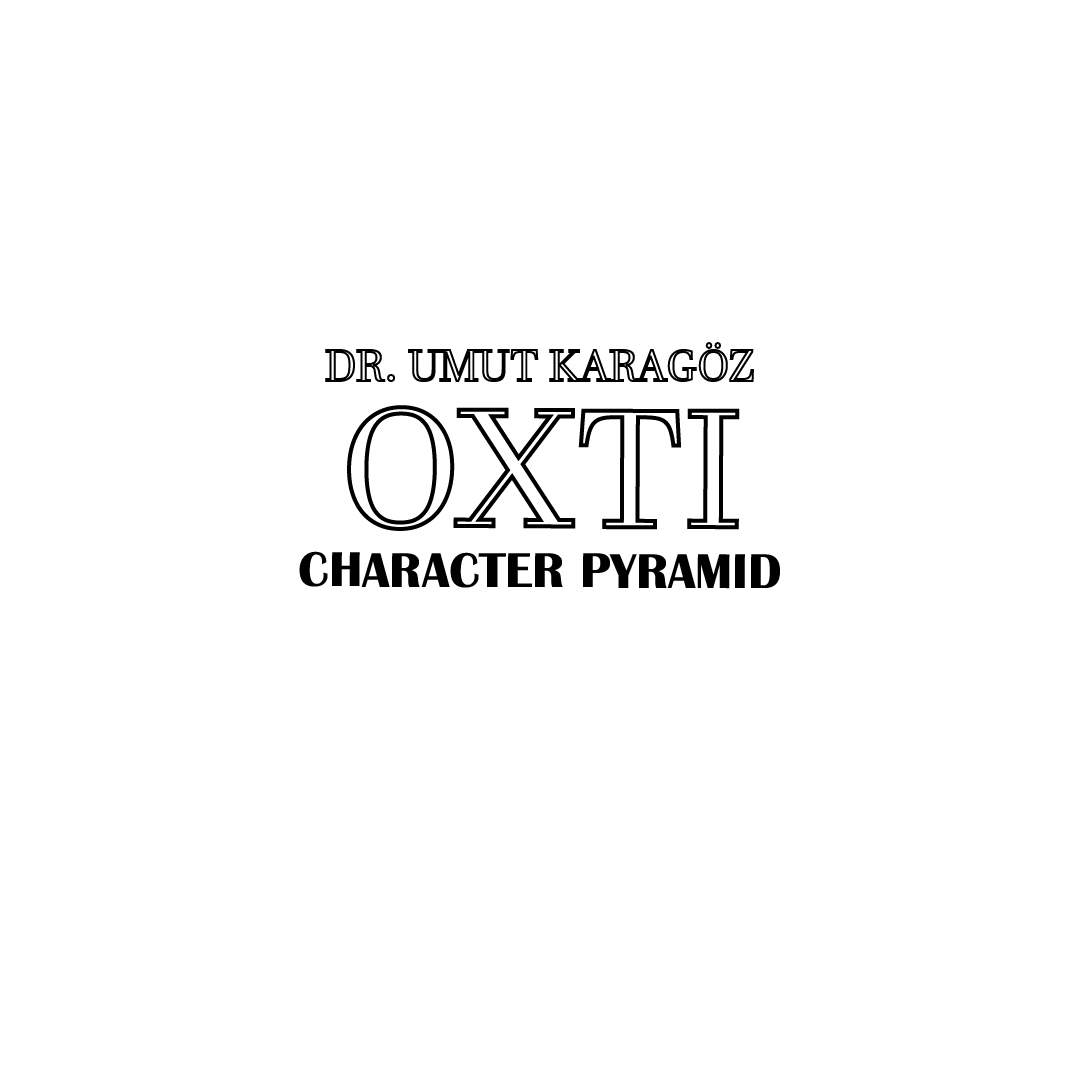What does it truly mean to understand a character? Not just a personality type, a label, or a symptom—but the living, breathing architecture of a human being. In both psychology and literature, character analysis has long been used as a window into identity, motivation, and meaning. Yet many existing models are limited—either overly scientific or overly symbolic, either rigid or vague. The OXTI Method, rooted in the Character Pyramid Theory, offers something else entirely: a structural yet intuitive, objective yet poetic model for understanding character in all its complexity.
Developed by clinical psychologist Umut Karagöz, this theory is not merely another typology. It is a map of the soul’s architecture. Based on four fundamental forces—Thought, Body, Matter, and Environment—OXTI conceptualizes character as an emergent system, like a unique genetic code formed by the interplay of internal and external elements. Much like DNA sequences construct a singular biological identity, the OXTI system views character as the product of constantly interacting layers of influence, both visible and hidden.
But the OXTI framework does more than describe structure—it bridges science and symbolism. At its core are the 12 Character Cores, mystical yet empirically inspired archetypes that reflect the inner truth of personality. These cores delve into unconscious motivations, intuitive patterns, and existential longings. They are not abstract inventions, but distilled insights gathered from years of psychological practice, observation, and symbolic inquiry. Together, they provide not only a way to read character—but to experience it as a living phenomenon.
The urgency of this method is clear. In an age where complexity overwhelms and surface-level judgments dominate, the OXTI model offers clarity without reduction. It respects the uniqueness of every individual, while providing a structured method to trace the roots of behavior, emotion, and choice. It can be used by psychotherapists and writers, educators and cultural analysts—anyone who seeks to understand character as more than behavior, more than history, more than data.
In short, the OXTI Character Pyramid is not simply a method.
It is a philosophy of human structure.

Structure Over Surface: How the OXTI Model Redefines Character Analysis
Traditional character analysis tends to hover around two poles: the externally observable and the narratively symbolic. One emphasizes behavior, the other myth. Yet both often neglect what lies between—structure. The OXTI Character Pyramid, built on years of clinical practice and theoretical synthesis, positions itself at this exact middle: where the visible and invisible meet, where internal experience intersects with external influence.
At the heart of this theory lie four foundational forces—Thought, Body, Matter, and Environment. These are not mere categories or metaphors. They are interdependent systems that, when combined, generate the architecture of human character:
- Thought is not simply cognition; it encompasses perception, ideology, memory, and symbolic orientation.
- Body extends beyond the physical; it includes affect, emotional memory, and embodied reactions.
- Matter represents the individual’s relationship to material reality—possessions, resources, limitations.
- Environment is both social and ecological: the relational, cultural, and systemic structures that shape selfhood.
These four forces act like psychological nucleotides, building the DNA of personality through their specific and unique combinations in each person. They are neither rigidly determined nor infinitely open—they follow a dynamic logic that OXTI seeks to capture.
Surrounding this core is the Character Pyramid: a layered framework encompassing stress systems, psychopathological structures, social hierarchies, life narratives, and micro-societal influences. Unlike typologies that assign a single identity (“Type 3,” “Introvert,” etc.), the pyramid maps identity over time—revealing how character evolves, adapts, and fractures under pressure.
Where the pyramid offers structural objectivity, the 12 Character Cores dive into the subjective, mystical, and existential layers of identity. These cores are not clinical descriptions; they are psychological archetypes that allow us to feel the mythic resonance of a character’s internal world. They acknowledge that identity is not only what we see—but what is dreamed, feared, desired, or suppressed.
This balance—between structure and essence, system and symbol—is what makes OXTI truly distinct. It allows for both diagnosis and imagination, for both clinical rigor and poetic expression. It is at once a method and a metaphor, a model and a myth.
In this way, character is no longer a fixed entity. It becomes a multi-dimensional, living formation—one that responds to context, adapts to history, and expresses its own language through behavior, emotion, and choice.

Character as Cosmos: Why OXTI Isn’t Just a Method—It’s a Shift in Consciousness
To analyze a character is not merely to observe behavior or classify personality—it is to enter a living system, shaped by forces both known and unknown, conscious and buried, embodied and imagined. This is the spirit of the OXTI Character Pyramid. It challenges the reductionist tools of conventional psychology and the flattening narratives of popular typologies. In their place, it offers a new grammar—a way of thinking and seeing that embraces both structure and soul.
The OXTI method does not simply answer the question “Who is this person?”
It asks the deeper, bolder question: “How has this person become who they are, and through which forces does that becoming continue?”
In this way, character becomes not a fixed trait but a constellation of evolving meanings—rooted in thought, felt in the body, constrained by matter, and shaped by environment. The pyramid provides the skeletal framework; the 12 cores breathe life into the bones.
And what of the analyst, the reader, the thinker who applies this model?
They too are transformed. Because to see character this way is to see not only others but oneself as a layered, mythic, and structural being—an unfolding identity with depth, direction, and possibility.
The OXTI theory is not merely a new technique.
It is an epistemological and symbolic revolution in how we understand character—across disciplines, cultures, and contexts.
In the union of science and story, of structure and intuition,
we find not only a better way to analyze character—
but a richer way to be human.
